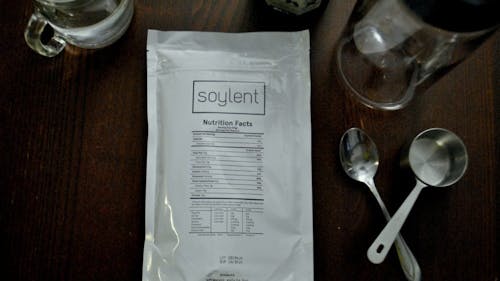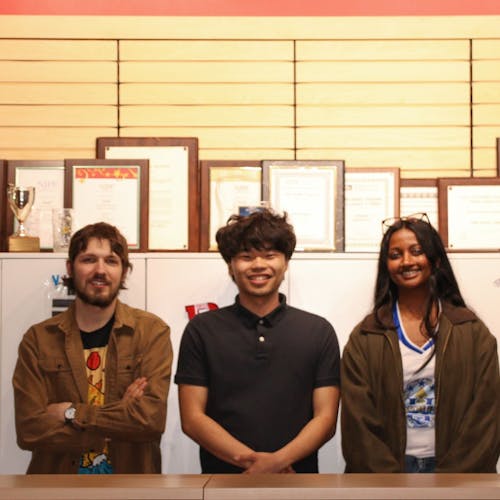This is what it's like to attempt drinking Soylent for 30 days

Maybe it sounds obvious, but if you have the option to choose between eating food or not eating food, you should always choose to eat food.
As a person who regularly dreams in her sleep about what to eat for breakfast and records episodes of Food Network shows, I never considered cutting my visceral relationship with food. Then I found out about Soylent.
You might have heard about it too, as the folks over at VICE, The Verge, The Atlantic, The New York Times and BuzzFeed tried it, and talked about it. But if you missed it, Soylent is a liquid meal that its founder, Silicon Valley's Rob Rhinehart, said has a day's nutrition for the average adult and keeps stomachs feeling full. Each serving of Soylent is around $3 to boot, a major step down from the average of $8 I usually spend on meals out.
I was intrigued. Yes, internally, my solid food-loving gut was screaming at me to click out of Soylent's website and to drag my eyes away from the articles chronicling many a brave individuals' extended experiences with the drink. But my eyes were glued, and my curiosity was snagged on Soylent like putty tangled in hair. Soylent seemed too novel to pass up, and so I ordered a week's worth of it, intent on following a 30-day Soylent and water regimen. I wanted to see if the hype surrounding Rhinehart's invention lived up to its name.
It arrived in a surprisingly short amount of time from a facility in Pennsylvania. From the box, I lifted out seven white bags of Soylent powder, a mixing pitcher and a stainless steel measuring scoop. I felt optimistic that I could stick to my plan. It didn't seem so bad, I thought, as I opened a bag and sniffed the beige contents. It smelled vaguely like peanuts.
I was right about the peanuts. As I took my first sip of Soylent a few days later, it tasted, as I scrawled in my notebook to track my daily progress, "like sad peanut butter." I began to doubt my decision from day one, and a knot of anxiety furled in my stomach.
This is where you can all laugh, or scoff — I cracked after a day and a half.
Physically, I felt fine. I felt that I was a little more sprightly, and my focus was as rigid as it'd ever been.
Mentally, I was bludgeoned with thoughts that distracted me all day despite my best attempts to resist them. I grappled with dreams of Sicilian pizza graced with extra red pepper flakes, Chipotle marinated with a generous scoop of their spiciest salsa, taro bubble tea infused with extra herb jelly and pasta blessed with a handful of shredded parmesan. Not even 24 hours had passed, and I was thinking of giving up.
My emotions were roiled. I was alarmed by my apparent lack of self discipline manifesting itself so quickly into my dietary change — I wanted solid food deeply. But I was determined to stick to seeing out the 30 days of Soylent, so I mechanically downed my liquid dinner. Yet on the inside, I was Leonardo DiCaprio at the Oscars last year. More concisely, I was the meme that escalated out of Leonardo DiCaprio at the 2014 Oscars — I was screaming internally.
On the second day, I watched my coworkers chat and fill up on sandwiches at lunch. I passed the aromatic scents of Indian food wafting from under doors in my apartment building around dinnertime. My resolve to stay on Soylent weakened a little more, and then it snapped entirely.
Yes, Soylent satiated my stomach. But it didn’t satisfy the same way a home-cooked meal — or even Seamless takeout — would. Soylent is the equivalent of eating a frozen Thanksgiving dinner alone in a warehouse instead of eating a holiday spread with your loved ones.
Sure, Soylent was born because Rhinehart, like so many early 20-somethings, was broke and too strapped for time to cook at home. So he stripped food down to its most basic elements. He marketed it right, and eventually caught the attention of Andreessen Horowitz, when earlier this year the venture capital firm invested $20 million in Soylent.
Soylent could be the answer to the world's continually growing struggle to find affordable, nutritious food. After all, nearly 800 million people on the planet don't have enough food to live a healthy life. Arable farmland is steadily waning, but the world population continues to swell. And in the face of it all, the United States alone scraps about 133 billion pounds of food each year.
Yet I question how popular Soylent would be if it was available worldwide to widespread hungry populations. Because for the most part, humans don’t like to eat or drink the same thing over and over.
There's an inimitable thrill in eating and preparing different food. There's enjoyment in feeling the leftover tingle of spiciness on your lips after a good meal, or feeling the steam from a freshly-prepared dish waft into your face. There's a warmth about pooling dishes together for a potluck, or about the few seconds of quiet chewing from everyone around a table before peppering the chef with compliments.
And that was the thought that ran through my mind as I decided to prematurely end my Soylent experiment and book it to my neighborhood Thai restaurant.
The first bite of the extra spicy chicken Pad Thai was euphoric. My eyes rolled back in my head. I saw stars. I reveled in the mild burning of the inside of my mouth. My Soylent-filled stomach grumbled indignantly from the sudden switch from liquid to solid food.
Despite my joyful reunion with solid food, I wish I could have stuck to Soylent longer than a day and a half. My failed stint made me question my will power more times than store bells chimed on my busy street, although it did affirm the affectionate bond I have with a fresh acai bowl.
But if anyone's up for beating my Soylent record, I'd be happy to give away my supply — I have plenty.



